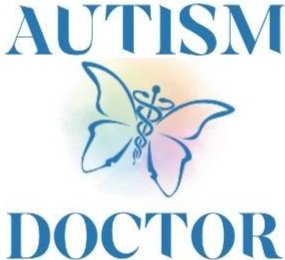Post-Diagnostic Support: Coaching? Therapy? Mentoring?
People seek me out for Therapy, Counselling or Coaching. They almost never ask for Mentoring, although that term describes my offer much closer. Along with Psychoeducation.
Frankly, I cannot define what I offer in one word. Therefore, I will start with reviewing the most commonly used approaches, and use that information to explain what it is I do. This series of posts will be of particular interest to those who consider working with me. But the general information about the methods, the underlying principles and the advice on vetting the professionals you consider hiring will be of interest to most autistic and other neurodivergent people, given the recent explosion of numbers among Coaches, Mentors and Counsellors in every walk of life - particularly, within the Neurodiversity & DEI Industrial Complex!
1:1 Self-Improvement Methods
Introduction
There's a number of widely used, transdisciplinary self-improvement methods with two essential actors:
a client - the individual seeking to better themselves, and
an expert - the individual possessing expertise which enables the expert to assist the client in pursuit of the client's goals.
The client and the expert meet 1:1 for discussion aimed at facilitating reaching the client’s goals.
The meeting setting, frequency and the number of meetings, each meeting's agenda, etc vary widely, depending on a range of factors that we will discuss here.
These methods tend to belong to one of the five categories, described below.
Five Categories of 1:1 Work
Mentoring.
Coaching.
Psychotherapy.
Counselling.
Psychoeducation.
Let's clarify the following points:
what these options are,
what they are not, and
what are the signs “distinguishing” the less-than-trustworthy experts claiming to provide one of these 5 categories of services.
The Common Features
All five approaches share a number of commonalities. These can be divided into two groups: one has to do with the session form, and the other one - the process within the sessions.
The Common Features of the Form.
The initial session.
One-to-one setting.
A contract agreed by both parties, specifying the goals of the intervention, the place and modality of the meetings, session duration, a number of sessions, the negotiated payment amount, the exit clause, cancellation policy, and other contractual obligations.
Progress reviews.
The formal ending.
The Common Features of the Process.
Aiming for Positive Change. Each intervention aims to facilitate a positive change in the client's life.
Creating “Safe Space”: Mutual Trust. Each intervention begins with development of a relationship of mutual trust & respect between the expert and the client.
Creating “Safe Space”: Unconditional Positive Regard. This relationship development relies on unconditional acceptance of the client by the expert (aka “unconditional positive regard”).
Creating “Safe Space”: Open Communication. All interventions are, in essence, communication between the two parties: one brings an issue to be discussed, while the other party uses active listening, empathy, their training and experience in order to assist the client in reaching their goals.
Maintaining Boundaries. The nature of the relationship necessitates defining & maintaining professional boundaries.
Attachment & Transference. Each intervention (except for Psychoeducation & very short, focused therapy models) may¹ lead to development of what is known as attachment, and subsequent “transference”. Transference describes the process in which the client “transfers” the emotions and attitudes dominating the past & present relationship between the client and their parents on to their relationship with the expert in the present.²
Next week…
Next week, we will briefly outline the key differences between the 5 methods. Then, we will describe how we integrate principles of psychoeducation, mentoring, coaching and ideas borrowed from philosophy, psychology and psychotherapy with medicine and neuroscience, creating AUTISTIC Understanding From First Principles: a holistic approach to supporting autistic individuals firmly rooted in biopsychosocial model.
Footnotes:
¹. The ideas of attachment and transference are rooted in John Bowlby's attachment theory and in psychoanalytic theories, respectively.
². Even though the idea of transference belongs to psychoanalysis, it can be easily contextualised applying modern psychology insights; perhaps, even, by using your common sense.
We use the relationship with our parents as a blueprint for all subsequent significant relationships in our lives. The more child-like we feel, the closer the resurfacing unconscious gets to the consciousness, the more obvious the influence of the blueprint.
And, as adults, the most child-like role we get to play is found within boundaries of a successful, well-functioning, competently managed therapeutic relationship.


